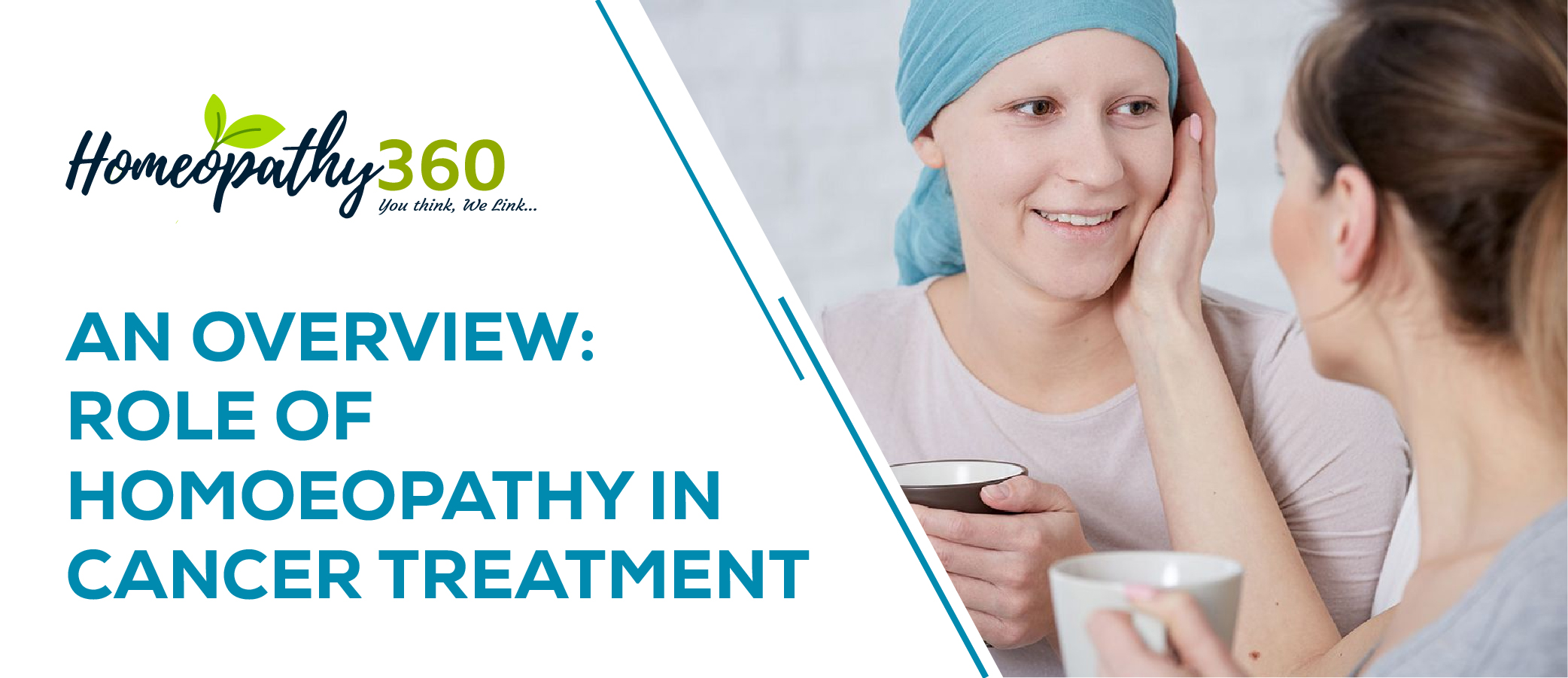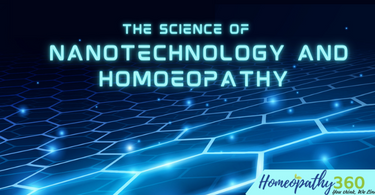
ABSTRACT:
Cancer is surprisingly common, developing at some time in the life of more than one-third of the population, and the second most common leading cause of death in many countries, after cardiovascular diseases. However, the cancer burden can be reduced through early detection and management of patients. Homoeopathy has a significant role in management for palliative and curative care in cancer patients. It is maybe more effective when the physician has comprehensive knowledge about cancer and risk factors along with relevant information related to cancer available in the homoeopathic literature. This article tries to present such material with the idea of helping the homoeopathic physician to manage the cancer patients in a better way. This article attempts to highlight the homoeopathic approach towards adverse effects arises from chemotherapy and radiotherapy of cancer patients.
INTRODUCTION:
Cancer is the serious burden of disease worldwide.1 Cancer is surprisingly common, developing in life of more than one-third of the population, and according to the 2003 report of the World Health Organization, cancer is the 2nd largest cause of death in developed countries, after cardiovascular diseases.2 However, there is, significant variability with age, sex and geography in the incidence, and as well as resources available for detection and treatment. One most important feature of cancer is the rapid transformation of abnormal cells, which may invade local parts of the body and even spread to distant organs, which referred to as metastases.3 Amongst the more common are lung and breast cancer; the incidence is often higher in the developed country.4
From the therapeutic point, cancer burden can also be reduced through early detection of cancer and management of patients. The reason is many cancers have a high chance of cure if diagnosed early and treated adequately.3
AETIOLOGY and RISK FACTORS:
In recent times, significant improvement in understanding of cancer aetiology and risk factors as well as advancement in early detection, treatment, and prevention have been observed, which have led to declining cancer mortality. Despite this progress, certain cancers continue to increase in different parts of the world, due to changing patterns of cancer risk factors. Epidemiologically, 30–50% of cancers can be prevented by avoiding risk factors and implementing existing evidence-based prevention strategies.3 Most cancers are caused by the transformation of normal cells into tumour cells in a multistage process through exposures in the environment (risk factors), rather than inherited genetic factors.1,3 Three categories of external agents, includes:3
- Physical carcinogens, such as ionising radiation and ultraviolet.
- Chemical carcinogens, such as asbestos, arsenic (a drinking water contaminant), aflatoxin (a food contaminant), and components of tobacco smoke.
- Biological carcinogens, such as infections from some bacteria, viruses, or parasites.
However, epidemiologically, tobacco is the most critical risk factor for cancer and is responsible for approximately 22% of cancer-related deaths globally.3
CLINICAL PRESENTATION:
To plan the management of a cancer patient,history and details of the tumour related problem should be evaluated, along with the identification of potential risk factors and the extent of the disease (stage). A thorough clinical examination is essential for identifying sites of metastases to identify any co-morbid conditions that may have a significant role in the management plan.4
The clinical presentation of cancer can have both local (pain, lump, bleeding, ulcer, skin abnormality, obstructive features, etc.) and systemic symptoms (anorexia, weight loss, fatigue, skin abnormalities, hypercalcaemia, neuropathies, myopathies, etc.). In view, systemic features may be the result of metastases or the non-metastatic manifestations of the disease. The overall fitness of patients can be evaluated by using an available assessment scale.4
DIAGNOSIS:
Screening is essential for detecting cancer at a very early stage before it produces any signs or symptoms. The prime objective of screening is to reduce mortality. 4
The clinical presentation of cancer including history and examination, along with results of radiology, biochemistry (specific tumour marker) and immuno-histochemistry is always required to making a diagnosis. However, a firm diagnosis of cancer needs a pathological examination of the abnormal tissue by using biopsy or fine needle aspiration cytology (FNAC). The primary use of tumour markers is to assess response to treatment and check for recurrence.4
Death from cancer can be reduced by early diagnosis and proper treatment. Also, when identified early, it is more likely to respond to effective treatment and may result in a higher probability of surviving, less morbidity, and less expensive treatment. Essential steps of early diagnosis consist of awareness, clinical evaluation, diagnosis and staging.3
HOMOEOPATHIC APPROACH:
The homoeopathic medicine is select in accordance with homoeopathic principles with considering the totality and the miasmatic aspects. An accepted principle is that homoeopathy does treat the patient as a whole, not a particular disease. Hence selection of medicine in cancer cases should be based on the constitutional approach. But in clinical practice, it is challenging to follow the constitutional method to treat a cancer case. The reason is most of the cancer patient come for homoeopathy at the end stage of his disease state or metastatic condition having a poor prognosis. So there is significantly less time available for constitutional treatment. Also, before considering homoeopathy patient already take too much suppressive anti-cancer medication.5,6
In these cases, palliative care is much needed to improve the quality of life and increase life span and to reduce post-radiotherapy and chemotherapy complications such as stomatitis, etc.7,8,9
A clinical trial showed that homoeopathic medicine has a significant impact on some cancer cell by the process of apoptosis and immune modulations. Whatever more clinical evidence basis study needed to prove the anti-metastatic effect of homoeopathy.10
MIASMATIC VIEW OF CANCER:
Any disease has a miasmatic evolution phase from psora to syphilis or sycosis. Master Hahnemann classifies cancer under psora in his chronic disease. Robert, in his “Principles and art of cure”, mentioned cancer as the multi miasmatic origin.6
However, Cancer and cancer miasm are not the same at all. Cancer miasm is included in all four miasms. But cancer can occur from any miasm, and the presenting picture of a cancer patient will be different according to the presence of different miasm on the background.6
A) When psora predominant-Psora in the background, it produces slowly growing tumour, which often begins in nature.
B) When sycosis is predominant- Sycosis originated, the tumour is rapidly growing. Sycotic miasm causes uncontrolled cellular proliferation, hypertrophy and overgrowth.
C) When syphilis is predominant- Cancer disease produces by syphilis have destructive pictures with necrosis and ulceration. Cancer with syphilis on the background is spread quickly.
D) When tubercular miasm dominant behind cancer- Disease with tubercular miasm has components of nodular and degenerative tubercles with haemorrhage from degenerative cells.11
Some useful medicine in cancer:12
- THE CANCER NOSODES: The most frequently used nosodes are in cancer is Carcinosinum and Scirrhinum.
These nosodes can be used in such conditions-
- As an inter-current with an organ-specific and constitutional remedy.
- As a palliative aid in cases of advance and end-stage of cancer.
- As a preventive aid, when there is a family history of cancer.
- WIDE SPECTRUM CANCER SPECIFICS :
- Conium maculatum presents the picture of stony hard tumour or gland and has a useful role in the cancer of oesophagus, breast, and stomach.
- Thuja occidentalis is good medicine for cauliflower-like growth. Particularly with cancer of uterus, ovaries, bladder, prostate and rectum.
- Psorinum is useful for in general any dermatological cancer.
- Ruta graveolens is the right choice for any bony growths or cancer of the bone, especially cranial bones. Also useful in rectal cancer.
- ORGAN SPECIFICS:
- Arsenicum bromatum and Arsenicum iodatum useful in squamous cell and basal cell carcinoma of the skin.
- Aurum muriaticum is useful for the cancer of the oral cavity.
- Cadmium sulphuratum is useful for the cancer of the stomach and pancreas. Coffee- ground vomiting in stomach cancer is the principal symptoms.
- Hekla lava is a principal remedy for bone cancer like sarcoma, osteoclastoma, myeloma.
- Symphytum mainly uses for secondary carcinoma of the bone.
- Lachesis and Lilium tigrinum more often use in cancer of uterus, ovary and cervix.
- Nitric acid is anti haemorrhagic drug use in rectal cancer with bleeding. In conditions where any ulceration with bleeding present, the remedy works efficiently.
- Phytolacca is a good remedy for breast cancer and parotid gland cancer.
- Sabal serrulata for cancer of prostate and bladder.
- Terebinthina is a remedy for bladder cancer.
CONCLUSION:
The article usually tries to give a brief idea and useful information about cancer and also try to highlight the role of homoeopathy in cancer. Management of cancer will be even more effective if such information is made available with the physicians and is suitably utilised in deciding the further treatment of patients. So, in a nutshell, homoeopathy in cancer is the best choice among the alternative treatment other than the conventional method. These medicines are not only giving palliative aid but also sometimes bring satisfactory improvement to the cancer patient. Also, various research studies reported the remarkable effect of homoeopathic medicines in the treatment of cancer and post-radiotherapy and chemotherapy complications. Few studies also tried to explain the mechanism of homoeopathic medicines in cancer by using cellular and animal models. Homoeopathy is a holistic approach of treatment, improves patient’s general health condition along with symptomatic improvement. But, more evidence basis research studies are needed to report regarding the efficiency of homoeopathic medicines in cancer cases.
REFERENCES:
- Ma X, Yu H. Global burden of cancer. Yale J Biol Med. 2007;79(3-4):85-94.
- Milazzo S, Russell N, Ernst E. Efficacy of homeopathic therapy in cancer treatment. European Journal of Cancer. 2006 Feb 1;42(3):282-9.
- WHO. Cancer; 2018. Available from: https://www.who.int/newsroom/factsheets/detail/cancer
- Cameron DA, Smyth JF. Oncology, In: Davidson’s Principles and Practice of Medicine. Boon NA et al. (Eds) 19th ed; Churchill Livingstone, 2002: 214-18.
- Hahnemann S. Organon of Medicine, translated from the 5th ed, with an appendix by R.E. Dudgeon, with additions and alterations as per 6th ed translated by W. Boericke and introduction by J. Krauss. New Delhi: B. Jain Publ., 2000.
- Master J. Farokh; Homoeopathy in cancer; B. Jain Publ; Reprint edition; 2008; Delhi.
- Oberbaum M. Experimental treatment of chemotherapy-induced stomatitis using a homeopathic complex preparation: A preliminary study. Biomed Ther 1998;16:261-5.
- Gaertner K, Müllner M, Friehs H, Schuster E, Marosi C, Muchitsch I, et al. Additive homeopathy in cancer patients: Retrospective survival data from a homeopathic outpatient unit at the medical university of Vienna. Complement Ther Med 2014;22:320-32.
- Frass M, Friehs H, Thallinger C, Sohal NK, Marosi C, Muchitsch I, et al. Influence of adjunctive classical homeopathy on global health status and subjective wellbeing in cancer patients: A pragmatic randomized controlled trial. Complement Ther Med 2015;23:309-17.
- Ahmad S, Rehman T, Abbasi Waheed Mumtaz; Homoeopathic approach for the treatment of cancer; IJRH; 2018; vol- 12; issue-3; pg- 157-163.
- Schuett K; cancer and the cancer maism; https://hpathy.com/homeopathy-papers/cancer-and-the-cancer-miasm/; visit- 5 Oct, 2020.
- Ramakrishna AU, Coulter RC; A HOMOEOPATHIC APPROACH TO CANCER; ninth house publishing; Berkley Spring, West Virginia.
About Author:
Dr Subhasish Sarkar1, Dr Asif Sardar2
1,2Medical Officer (Homoeopathy)
DEPARTMENT OF AYUSH, AIIMS BHUBANESWAR





